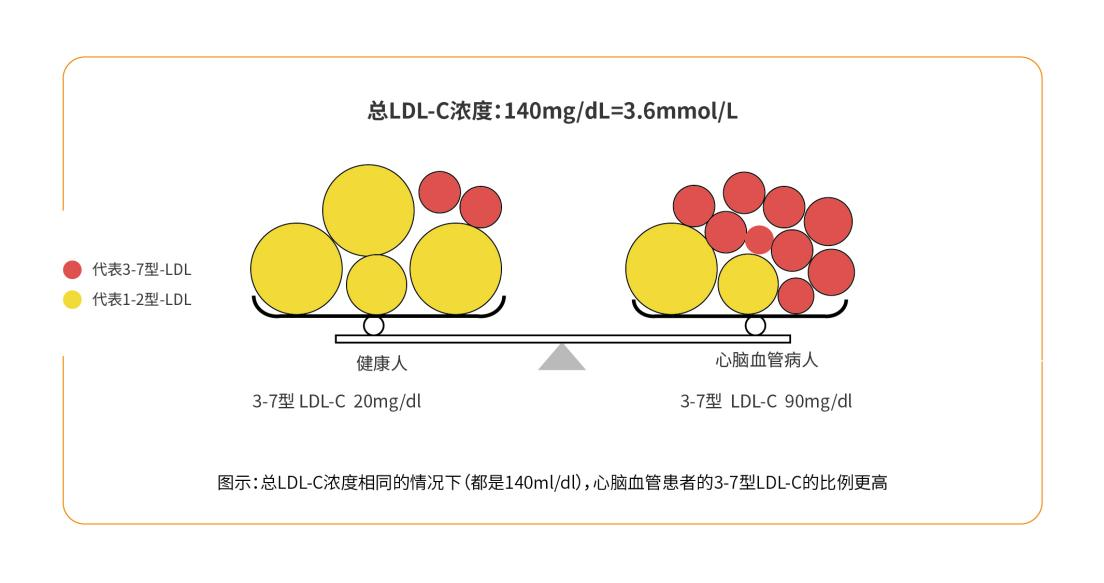无创产前诊断:迎来行业看好的最佳时机
| 导读 | 无创产前检测技术建立在香港科学家卢煜明于1997年发现的孕妇血液中包含胎儿DNA碎片的突破性研究上,研究发现,母亲血液中游离的基因片段约15%来自胎儿,这为无创产前检测提供了最具商业价值的胎儿遗传信息。
http://v.youku.com/v_show/id_XNTcyMTgwMDYw.html
香港中文大学卢煜明演讲无创产前检测
2010年卢煜明等人发表论文称,在孕妇血液中游... |
无创产前检测技术建立在香港科学家卢煜明于1997年发现的孕妇血液中包含胎儿DNA碎片的突破性研究上,研究发现,母亲血液中游离的基因片段约15%来自胎儿,这为无创产前检测提供了最具商业价值的胎儿遗传信息。
2010年卢煜明等人发表论文称,在孕妇血液中游离的DNA片段可用来重建胎儿的完整的基因组,并可用于无创性产前诊断,其中最为成熟的产前诊断是唐氏综合症,胎儿的21号、18号或者13号染色体出现多余的染色体拷贝,意味着胎儿会患唐氏综合症。
在高通量基因组测序的时代背景下,无创产前检测能以非侵入母体的方式提前预知胎儿健康状况,可判断胎儿是否具有特定疾病的遗传风险,在医学领域的发展前景很广阔。《MIT科技评论》将该无创产前技术评为2013年十大突破科技之一。
无创产前检测将取代羊膜穿刺传统诊断
胎儿产前检测的技术流程是先抽取孕妇5-10毫升静脉血,再从中提取血浆DNA并对其进行基因测序,最终结合生物信息学分析断定胎儿患唐氏综合症或其它遗传疾病的风险。

无创产前诊断的技术优势可改变羊膜穿刺等传统诊断法的四大弊端,如误诊率高、假阳性率高、流产风险高以及染色体疾病诊断单一。从技术前景上看,高龄孕妇为了优生优育而接受羊水穿刺的流产风险,而无创产前检测具备诊断率高和流产率低的特点,有理由相信其在生物信息学发展的推动下焕发生机。
无创产前诊断可显著降低传统诊断中40%的误诊率以及5%的假阳性率。接受羊膜穿刺诊断的孕妇拿到的唐氏综合症报告仅能确保70%的准确率,这是因为其依据的因素是年龄、体重以及静脉血中两分子(AFP和B-HCG)水平,而这两个分子与21号染色体三倍化没有直接关联,所以算出来的风险值与唐氏综合征只有一定的相关性。此外,一些胎儿患唐氏综合症的风险是很小的,却被传统方法诊断为高风险,这些“被阳性”的孕妇将面临是否终止妊娠的艰难抉择。
无创产前诊断可降低流产风险并能诊断多种遗传疾病。羊水穿刺是一个容易导致流产的诊断技术,对其影响的因素很多,如孕妇体质、操作技术、胎儿悸动以及伤口感染;无创产前诊断可绘制胎儿的基因组图谱,应用范围将涉及到染色体疾病和单核苷酸多态性(SNPs)诊断。
生物技术公司跃跃欲试无创产前诊断领域
2011年美国Sequenom公司为开拓无创产前检测市场推出了MaterniT21检测仪,它所采用的SEQureDx 技术吸收了卢煜明教授那里获得的胎儿基因鉴定技术,主要用于检测21号染色体上36个碱基的DNA片段。该检测仪推动了无创产前诊断时代的到来,解决了以羊膜穿刺和绒毛取样为代表的传统产前检测的操作难题。
2012年3月,Ariosa作为一家分子诊断公司完成了无创产前测试的临床验证研究,在当时是对胎儿三倍体的非侵入产前检测的最大临床研究,研究的对象是孕妇血液中无细胞脱氧核糖核酸,并以此评估胎儿的遗传状况。出于对无创产前检测产业前景的看好,Ariosa公司利用专有技术对胎儿DNA进行定向分析,以适应与Sequenom和Verinata在无创产前检测领域的竞争。
2013年年初,基因测序公司Illumina斥资5亿美元收购了具有无创产前诊断优势的Verinata公司,希望通过兼并方式重组技术优势以提高Illumina公司在遗传数据的处理和分析能力,对于这个引领第二代测序技术的公司致力于将遗传数据用来预测与生俱来的基因优势或缺陷。此前,该公司拒绝了罗氏67亿美元的收购要约,这是出于基因组诊断换来丰厚利润这一期望。
专家看好无创产前诊断领域
著名孕产妇胎儿医学专家Kypros Nicolaides教授表示:“我们的研究结果证明了游离DNA检测技术用于常规筛查三体综合征的价值。这项技术代表了产前筛查的一个最伟大的进步,有助于更好地为孕妇提供保健服务。”
伦敦国王学院Kypros Nicolaides教授称,这种检测已经接近诊断了,它几乎可以完全确定地告诉你的小孩是否会发生唐氏综合症。从孕妇的角度来说,这为下一步该做什么提供了非常清晰的指导信息。目前接受侵入性检测的孕妇比例在3%至5%之间,而胎儿DNA检测可将这个比例降到0.5%以下。
华盛顿大学的基因科学家Shendure 称,这项工作开启了一个可能性,即我们将能够以单一、无创的方式,扫描一个胎儿的完整基因组,筛查超过3000种单个基因造成的疾病以及200多种其它疾病,如某些类型的自闭症(大段DNA的复制或缺失造成的)。
斯坦福研究中心的生物工程学教授Stephen Quake 称,我们对于鉴别在出生前或出生后立即就能治疗的疾病感兴趣。如果没有无创产前诊断,患有可治疗代谢或免疫系统疾病的新生儿就得忍受疾病的痛苦直到它们的症状变得明显,病因得到确定。
参考文献
Fetal nucleic acids in maternal blood: the promises.
Fetal DNA is present at an approximate mean fractional concentration of 10% in the plasma of pregnant women. The detection of paternally-inherited DNA sequences that are absent in the maternal genome, e.g., Y chromosomal sequences for fetal sexing and the RHD gene for blood group genotyping, is well established. The recent emergence of single molecule counting technologies, such as digital polymerase chain reaction and massively parallel sequencing has allowed circulating fetal DNA to be used for the non-invasive p...
Genomic analysis of fetal nucleic acids in maternal blood. The 15 years since the discovery of fetal DNA in maternal plasma have witnessed remarkable developments in noninvasive prenatal diagnosis. An understanding of biological parameters governing this phenomenon, such as the concentration and molecular size of circulating fetal DNA, has guided its diagnostic applications. Early efforts focused on the detection of paternally inherited sequences, which were absent in the maternal genome, in maternal plasma. Recent developments in precise measurement technologies such as d...
Non-invasive prenatal diagnosis by massively parallel sequencing of maternal plasma DNA.
The presence of foetal DNA in the plasma of pregnant women has opened up new possibilities for non-invasive prenatal diagnosis. The use of circulating foetal DNA for the non-invasive prenatal detection of foetal chromosomal aneuploidies is challenging as foetal DNA represents a minor fraction of maternal plasma DNA. In 2007, it was shown that single molecule counting methods would allow the detection of the presence of a trisomic foetus, as long as enough molecules were counted. With the advent of massively paralle...
Next generation sequencing of SNPs for non-invasive prenatal diagnosis: challenges and feasibility as illustrated by an application to β-thalassaemia.
β-Thalassaemia is one of the most common autosomal recessive single-gene disorder worldwide, with a carrier frequency of 12% in Cyprus. Prenatal tests for at risk pregnancies use invasive methods and development of a non-invasive prenatal diagnostic (NIPD) method is of paramount importance to prevent unnecessary risks inherent to invasive methods. Here, we describe such a method by assessing a modified version of next generation sequencing (NGS) using the Illumina platform, called 'targeted sequencing', based on t...
on-invasive prenatal diagnosis for single gene disorders: experience of patients.
The aim of this study is to explore women's experiences of using newly developed non-invasive prenatal diagnosis (NIPD) for single gene disorders. Methods used in this study include qualitative one-to-one interviews with eight women with pregnancies at risk of achondroplasia, Apert syndrome, thanatophoric dysplasia or a neuromuscular condition. The results of the study show that the women were positive about an accurate, safe, and early test. Where the foetus was at increased risk of inheriting a genetic condition,...
Non invasive prenatal testing of fetal aneuploidies by massively parallel sequencing in a prospective Chinese population.
The recently developed non invasive prenatal test (NIPT) presents a new era of prenatal screening. Previously reported studies were primarily conducted on high-risk and advanced maternal age (AMA) pregnancies. We sought to evaluate the performance of NIPT for detection of fetal aneuploidies in a Chinese cohort of women younger than 35 years old in a prospective clinical setting.
Non-invasive prenatal testing for aneuploidy - current status and future prospects.
Non-invasive prenatal testing (NIPT) for aneuploidy using cell-free DNA in maternal plasma is revolutionizing prenatal screening and diagnosis. We review NIPT in the context of established screening and invasive technologies, range of cytogenetic abnormalities detectable, costs, counseling, and ethical issues. Current NIPT approaches involve whole genome sequencing, targeted sequencing, and assessment of single nucleotide polymorphism (SNP) differences between mother and fetus. Clinical trials have demonstrated the...

来源:生物探索
2010年卢煜明等人发表论文称,在孕妇血液中游离的DNA片段可用来重建胎儿的完整的基因组,并可用于无创性产前诊断,其中最为成熟的产前诊断是唐氏综合症,胎儿的21号、18号或者13号染色体出现多余的染色体拷贝,意味着胎儿会患唐氏综合症。
在高通量基因组测序的时代背景下,无创产前检测能以非侵入母体的方式提前预知胎儿健康状况,可判断胎儿是否具有特定疾病的遗传风险,在医学领域的发展前景很广阔。《MIT科技评论》将该无创产前技术评为2013年十大突破科技之一。
无创产前检测将取代羊膜穿刺传统诊断
胎儿产前检测的技术流程是先抽取孕妇5-10毫升静脉血,再从中提取血浆DNA并对其进行基因测序,最终结合生物信息学分析断定胎儿患唐氏综合症或其它遗传疾病的风险。

无创产前诊断的技术优势可改变羊膜穿刺等传统诊断法的四大弊端,如误诊率高、假阳性率高、流产风险高以及染色体疾病诊断单一。从技术前景上看,高龄孕妇为了优生优育而接受羊水穿刺的流产风险,而无创产前检测具备诊断率高和流产率低的特点,有理由相信其在生物信息学发展的推动下焕发生机。
无创产前诊断可显著降低传统诊断中40%的误诊率以及5%的假阳性率。接受羊膜穿刺诊断的孕妇拿到的唐氏综合症报告仅能确保70%的准确率,这是因为其依据的因素是年龄、体重以及静脉血中两分子(AFP和B-HCG)水平,而这两个分子与21号染色体三倍化没有直接关联,所以算出来的风险值与唐氏综合征只有一定的相关性。此外,一些胎儿患唐氏综合症的风险是很小的,却被传统方法诊断为高风险,这些“被阳性”的孕妇将面临是否终止妊娠的艰难抉择。
无创产前诊断可降低流产风险并能诊断多种遗传疾病。羊水穿刺是一个容易导致流产的诊断技术,对其影响的因素很多,如孕妇体质、操作技术、胎儿悸动以及伤口感染;无创产前诊断可绘制胎儿的基因组图谱,应用范围将涉及到染色体疾病和单核苷酸多态性(SNPs)诊断。
生物技术公司跃跃欲试无创产前诊断领域
2011年美国Sequenom公司为开拓无创产前检测市场推出了MaterniT21检测仪,它所采用的SEQureDx 技术吸收了卢煜明教授那里获得的胎儿基因鉴定技术,主要用于检测21号染色体上36个碱基的DNA片段。该检测仪推动了无创产前诊断时代的到来,解决了以羊膜穿刺和绒毛取样为代表的传统产前检测的操作难题。
2012年3月,Ariosa作为一家分子诊断公司完成了无创产前测试的临床验证研究,在当时是对胎儿三倍体的非侵入产前检测的最大临床研究,研究的对象是孕妇血液中无细胞脱氧核糖核酸,并以此评估胎儿的遗传状况。出于对无创产前检测产业前景的看好,Ariosa公司利用专有技术对胎儿DNA进行定向分析,以适应与Sequenom和Verinata在无创产前检测领域的竞争。
2013年年初,基因测序公司Illumina斥资5亿美元收购了具有无创产前诊断优势的Verinata公司,希望通过兼并方式重组技术优势以提高Illumina公司在遗传数据的处理和分析能力,对于这个引领第二代测序技术的公司致力于将遗传数据用来预测与生俱来的基因优势或缺陷。此前,该公司拒绝了罗氏67亿美元的收购要约,这是出于基因组诊断换来丰厚利润这一期望。
专家看好无创产前诊断领域
著名孕产妇胎儿医学专家Kypros Nicolaides教授表示:“我们的研究结果证明了游离DNA检测技术用于常规筛查三体综合征的价值。这项技术代表了产前筛查的一个最伟大的进步,有助于更好地为孕妇提供保健服务。”
伦敦国王学院Kypros Nicolaides教授称,这种检测已经接近诊断了,它几乎可以完全确定地告诉你的小孩是否会发生唐氏综合症。从孕妇的角度来说,这为下一步该做什么提供了非常清晰的指导信息。目前接受侵入性检测的孕妇比例在3%至5%之间,而胎儿DNA检测可将这个比例降到0.5%以下。
华盛顿大学的基因科学家Shendure 称,这项工作开启了一个可能性,即我们将能够以单一、无创的方式,扫描一个胎儿的完整基因组,筛查超过3000种单个基因造成的疾病以及200多种其它疾病,如某些类型的自闭症(大段DNA的复制或缺失造成的)。
斯坦福研究中心的生物工程学教授Stephen Quake 称,我们对于鉴别在出生前或出生后立即就能治疗的疾病感兴趣。如果没有无创产前诊断,患有可治疗代谢或免疫系统疾病的新生儿就得忍受疾病的痛苦直到它们的症状变得明显,病因得到确定。
参考文献
Fetal nucleic acids in maternal blood: the promises.
Fetal DNA is present at an approximate mean fractional concentration of 10% in the plasma of pregnant women. The detection of paternally-inherited DNA sequences that are absent in the maternal genome, e.g., Y chromosomal sequences for fetal sexing and the RHD gene for blood group genotyping, is well established. The recent emergence of single molecule counting technologies, such as digital polymerase chain reaction and massively parallel sequencing has allowed circulating fetal DNA to be used for the non-invasive p...
Genomic analysis of fetal nucleic acids in maternal blood. The 15 years since the discovery of fetal DNA in maternal plasma have witnessed remarkable developments in noninvasive prenatal diagnosis. An understanding of biological parameters governing this phenomenon, such as the concentration and molecular size of circulating fetal DNA, has guided its diagnostic applications. Early efforts focused on the detection of paternally inherited sequences, which were absent in the maternal genome, in maternal plasma. Recent developments in precise measurement technologies such as d...
Non-invasive prenatal diagnosis by massively parallel sequencing of maternal plasma DNA.
The presence of foetal DNA in the plasma of pregnant women has opened up new possibilities for non-invasive prenatal diagnosis. The use of circulating foetal DNA for the non-invasive prenatal detection of foetal chromosomal aneuploidies is challenging as foetal DNA represents a minor fraction of maternal plasma DNA. In 2007, it was shown that single molecule counting methods would allow the detection of the presence of a trisomic foetus, as long as enough molecules were counted. With the advent of massively paralle...
Next generation sequencing of SNPs for non-invasive prenatal diagnosis: challenges and feasibility as illustrated by an application to β-thalassaemia.
β-Thalassaemia is one of the most common autosomal recessive single-gene disorder worldwide, with a carrier frequency of 12% in Cyprus. Prenatal tests for at risk pregnancies use invasive methods and development of a non-invasive prenatal diagnostic (NIPD) method is of paramount importance to prevent unnecessary risks inherent to invasive methods. Here, we describe such a method by assessing a modified version of next generation sequencing (NGS) using the Illumina platform, called 'targeted sequencing', based on t...
on-invasive prenatal diagnosis for single gene disorders: experience of patients.
The aim of this study is to explore women's experiences of using newly developed non-invasive prenatal diagnosis (NIPD) for single gene disorders. Methods used in this study include qualitative one-to-one interviews with eight women with pregnancies at risk of achondroplasia, Apert syndrome, thanatophoric dysplasia or a neuromuscular condition. The results of the study show that the women were positive about an accurate, safe, and early test. Where the foetus was at increased risk of inheriting a genetic condition,...
Non invasive prenatal testing of fetal aneuploidies by massively parallel sequencing in a prospective Chinese population.
The recently developed non invasive prenatal test (NIPT) presents a new era of prenatal screening. Previously reported studies were primarily conducted on high-risk and advanced maternal age (AMA) pregnancies. We sought to evaluate the performance of NIPT for detection of fetal aneuploidies in a Chinese cohort of women younger than 35 years old in a prospective clinical setting.
Non-invasive prenatal testing for aneuploidy - current status and future prospects.
Non-invasive prenatal testing (NIPT) for aneuploidy using cell-free DNA in maternal plasma is revolutionizing prenatal screening and diagnosis. We review NIPT in the context of established screening and invasive technologies, range of cytogenetic abnormalities detectable, costs, counseling, and ethical issues. Current NIPT approaches involve whole genome sequencing, targeted sequencing, and assessment of single nucleotide polymorphism (SNP) differences between mother and fetus. Clinical trials have demonstrated the...

来源:生物探索
 腾讯登录
腾讯登录


还没有人评论,赶快抢个沙发